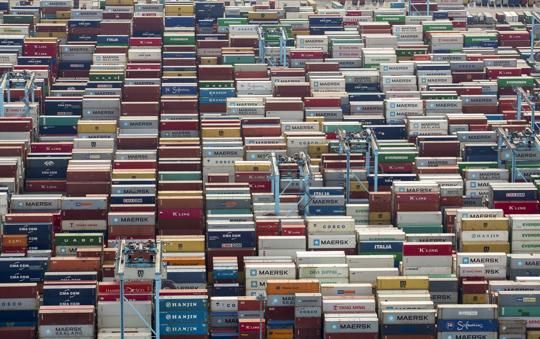Jorge Quijano usually hangs out at the Panama Canal, but this week he was in Norfolk.
The CEO of one of the shipping world’s most important spots said his board typically chooses a U.S. city of “importance within the global maritime industry” for an annual meeting.
“Norfolk is really like a sister port to the Panama Canal,” Quijano said.
Following visits to the USS Wisconsin and the Botanical Garden, Quijano – who plans to retire in September 2019 after 44 years working for the historic passageway – sat down with The Pilot. Here’s what he said about big ships, an expansion of the Panama Canal and the booming business of liquefied natural gas.
It’s been two years since the canal was revamped to handle larger ships. How are things going?
The expansion has been doing very well. We have increased the tonnage going to the canal by about 22 percent over one year to the next, from 2016 to 2017. So it’s a significant one-time jump. Most of that tonnage is cargo that’s coming to the East Coast of the United States and the Gulf. A significant portion of it actually comes to Norfolk, especially containers. So 34 percent of what comes in or out of Norfolk in the container trade goes through the Panama Canal.
It’s interesting you can tour some places here and learn about a system.
You have a big advantage that we do not have. You have production facilities here. You have car manufacturers around here. And maybe like Honda … they also do emergency generators and motor bikes. And you can do some work on those and then send them directly to the market.
The Panama Canal used to be mostly dry bulk, like dealing in grain. That all changed. What are you working with now?
Fifty percent of the revenue of the canal is containers. So we’re always focused, number one, on trying to get containers through. Bulk continues to be strong. Bulk continues to be around 18 to 20 percent of the cargo that goes through the canal, but the new kid on the block is LNG. Liquefied natural gas. That’s because the U.S. has become a major exporter of LNG. It used to be an importer. All of the gas you had around here was probably coming from Nigeria or somewhere else in the Middle East.
You mentioned a cooperation agreement . What do you see in Norfolk?
When we were doing the expansion, we needed to know which ports were ready. From the very beginning, you had the deep draft area of ports because you were handling also all of the Navy vessels that come here. It was a natural place to be the first ones to be able to handle the bigger ships and the deeper draft vessels.
Now you can actually receive here in Norfolk vessels that will never come through the Panama Canal because they are even larger. Norfolk is really very well positioned to handle now almost anything that’s thrown at them.
We’re hearing a lot about bigger container ships. What sort of ripple effects does that have on a port like Norfolk?
We saw it yesterday when we went to see (a distribution center for Target). You have a lot people there that are just distributing the cargo off a container. You have a lot of people handling the packages. It creates not just jobs for Target. It creates jobs for the truckers. It creates jobs for air transport like FedEx and UPS and DHL. All of these guys are part of that chain that started back in Asia in a container, which goes through the canal … it comes over here. You start looking back at one container and what it produces in jobs. It’s enormous.
